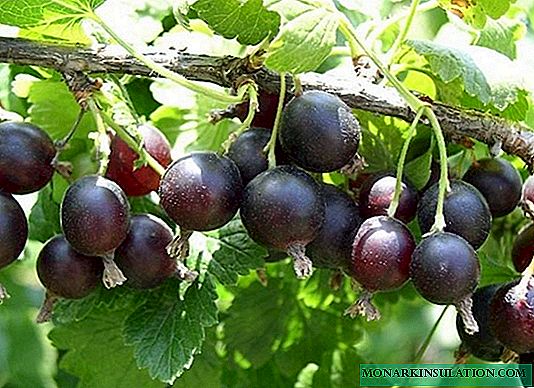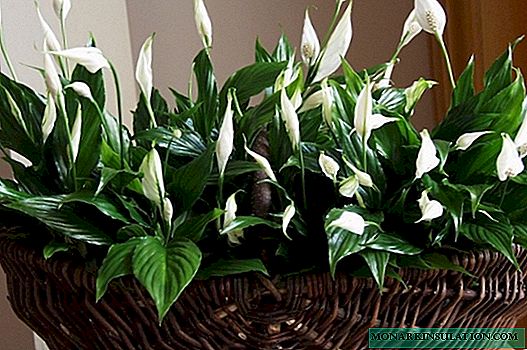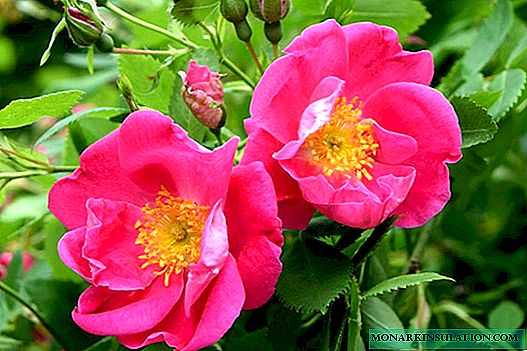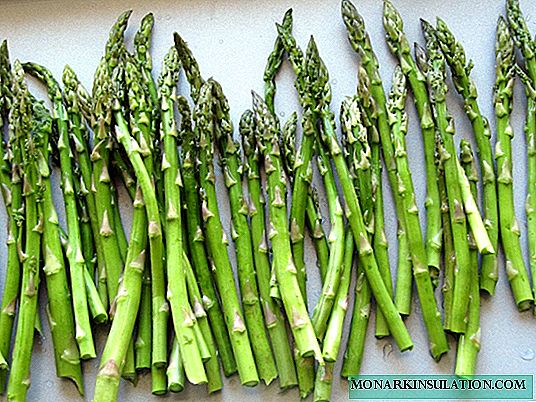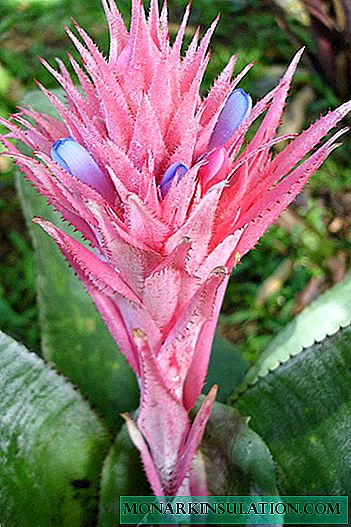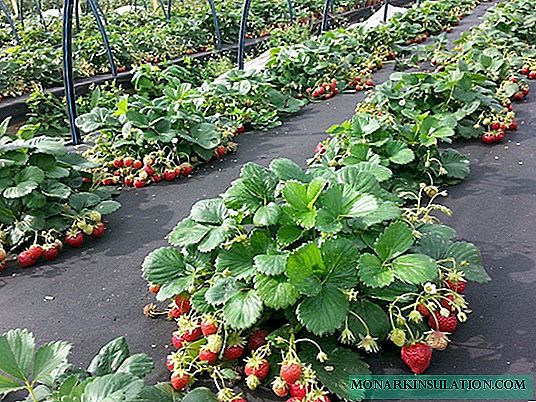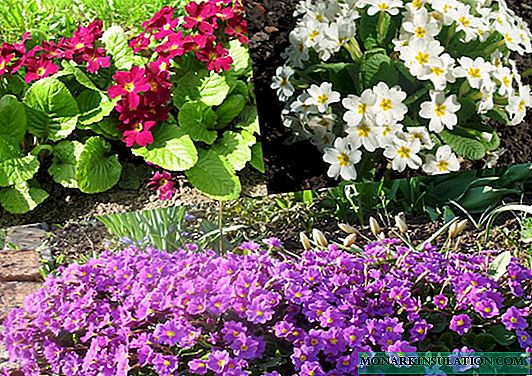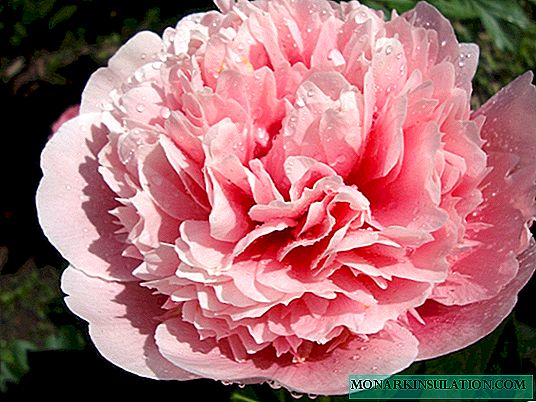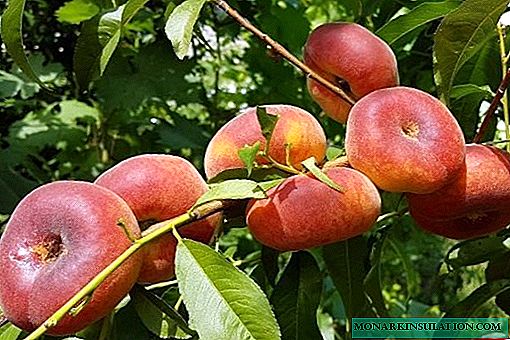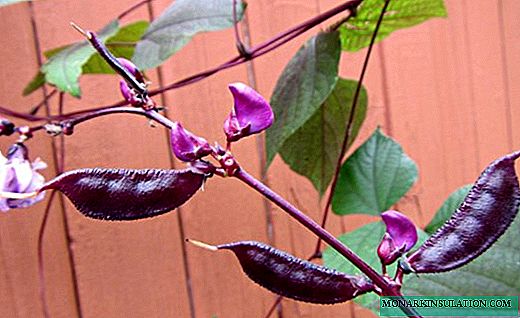Dolichos is a perennial climbing vine from the legume family. Its homeland is the tropics and subtropics of East Africa. In regions where frosts rarely occur in winter, dolichos can grow for several years, but in most regions of Russia it is grown as an annual crop. A powerful vine forms a dense shoot under which you can hide unsightly buildings or a fence, as well as entwine an arbor. Her delicate lilac flowers and shiny pods are a wonderful decoration. Dolichos can also be eaten, delicious and nutritious dishes are prepared from "black beans".

Botanical Description
Dolichos is a winding perennial with a branched rhizome. It consists of cord-shaped processes with small seals along the entire length. Long, slightly branched shoots grow on average 3-4 m, although there are specimens up to 10 m long. The stems are covered with brown-red bark. The shoots are devoid of antennae, they climb the support, twisting it counterclockwise.
Along the entire length of the vine is a large petiolate foliage. It has a heart shape and a rough, leathery surface. Leaves are dark green. Purple streaks are sometimes present along the central vein.
Dolichos blooms in mid-July. Multi-flowered long brushes appear at the ends of shoots or in the axils of the apical leaves. They consist of large flowers characteristic of all legumes and exude a delicate, pleasant aroma. In one inflorescence can be up to 40 buds. Petals are painted in white-yellow or pink-purple hues. Flowering of each brush lasts up to 20 days. They constantly replace each other, so dolichos will delight you with flowers until the first frost.













After pollination, the fruits are tied - wide and flat pods with 2-4 beans. The length of the pod is 5-6 cm. It attracts with a shiny dark purple surface and is able to compete in beauty with flowers. Beans are colored black with a white spot along the spine. They are oval and can be used as food.
Types of Dolichos
In the natural environment, in India and East Africa, about 70 species of dolichos grow. In Russia, only dolichos vulgarisAlso called the "curly lilac". The reason for this is lilac stains on flowers, vine and young leaves. Based on this species, several decorative varieties are bred:
- The pink moon. The variety is very similar to the flexible shoots of lilac. Vines up to 4 m long are covered with large heart-shaped leaves of bright green color. Among the lush greenery, long lilac inflorescences blossom. Glossy, dark purple beans persist until late autumn and can show off even against the background of the first snowdrifts.
 Pink moon
Pink moon - Purple garland. Shoots can grow 6 m in length. They are covered with very large leaves and long, garland-like inflorescences. The flowers are painted in bright purple. They are suitable for cutting and will stand for a long time in a vase.
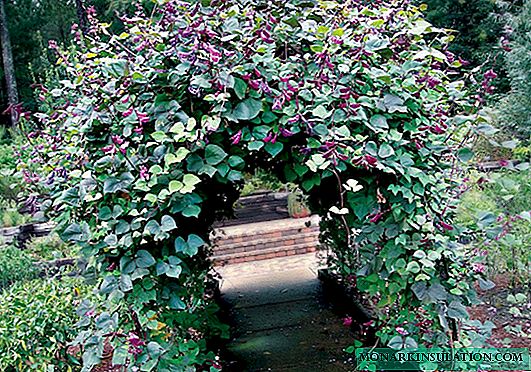 Purple garland
Purple garland - Lilac cascade. The plant is characterized by shorter, but highly branched vines. It is often used for landscaping verandas and balconies. Flowering and fruiting are not so plentiful, but the liana is resistant to cold snap and small frosts.
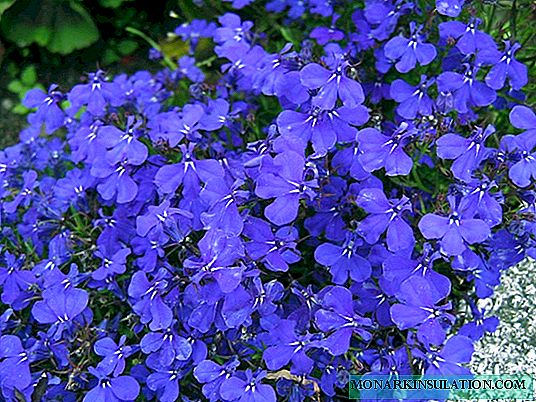 Lilac cascade
Lilac cascade - Dolichos lablab (lobia). The species grows at the foot of Kilimanjaro. Its shoots reach 3-5 m in length and give many lateral processes. Among the heart-shaped dark green foliage are racemose inflorescences. The buds are lilac or purple. After pollination, flattened beans with a wavy surface are formed. They contain rounded or oblong seeds.
 Dolichos lablab
Dolichos lablab
Breeding methods
In a culture, dolichos propagates exclusively by seed. Cuttings or rooting of layering is possible only with long-term cultivation and requires great effort. Seeds can be sown immediately in open ground. They do this in May, but seedlings sprout for a long time and at first develop slowly. As a result, flowering may occur in late August and will not last long. Beans with late flowering ripen poorly, so you can lose seeds for future plantings.
To prevent such difficulties, it is recommended to first grow seedlings. In early March, before sowing, the beans should be scarified, that is, damage the dense shell. Then moisture will more likely get to the embryo. To do this, the black skin of the fetus is treated with a nail file, knife or make several punctures with a needle. Under the white spot is the embryo itself, which cannot be damaged. Then you can soak the beans for a day in cool water. So that they do not become acidic, store soaked seeds in the refrigerator.
For planting use boxes or individual peat pots with a mixture of sheet soil, peat and sand. It is recommended to add a small amount of charcoal and chalk to the soil mixture. Seeds should be buried 2-3 cm with a distance of 4-5 cm. The pot is stored in a bright place at a temperature not lower than + 20 ° C. From time to time, the soil is moderately moistened. In late May or early June, grown plants are transplanted into the open ground. In order not to damage the root system, a transplant should be done with a lump of earth. Between the seedlings withstand a distance of 20-40 cm. You must immediately take care of the support, on which the liana can climb up.

Cultivation and care
Caring for dolichos is quite simple. The plant prefers open, well-lit areas. With a lack of sunlight, the shoots will grow more slowly and become pale. The optimum air temperature is + 20 ... + 30 ° C. Places with strong drafts and gusts of cold wind should be avoided, because dolichos is a gentle heat-loving plant.
The soil for creepers should be loose, fertile and have neutral acidity. Before planting, dig the ground and add a portion of leaf humus or mullein. Excess nitrogen in the soil is contraindicated.
Dolichos loves frequent watering. It is moistened 2-3 times a week with a small amount of water. In intense heat more abundant watering is needed. The soil should dry only on the surface, but moisture stagnation should not be allowed. To better penetrate the air to the roots, you should regularly loosen the ground and weed.
During the period of active growth and flowering, dolichos needs additional nutrition. It is best to use complexes with a high phosphorus content ("Superphosphate"). Diluted fertilizer is applied to the soil 1-2 times a month.
Near the liana, it is necessary to install a support with a height of at least 2 m. In order for the lateral processes to appear, it must be nipped periodically.
Dolichos is resistant to disease, however powdery mildew or leaf spot may develop in dense thickets. In order to protect the vine from ailments, it is necessary to choose a sunny and ventilated place for planting. Sometimes aphids, nematodes, caterpillars settle on shoots and leaves. From parasites, insecticides can be treated.
Dolichos in landscape design
Dolichos is ideal for decorating arches, arbors, fences and farm buildings up to 4 m high. Throughout the season, it attracts with bright foliage, abundant flowering and amazing fruits. Against such a picturesque background, a flower garden with lower plants will look much more attractive. The best neighbors for dolichos are dahlias, peonies, tulips and clematis. If you make a little more effort, a flexible vine can braid any base and get a picturesque sculpture in the middle of the lawn.
The plant can be grown not only in the garden, but also on the veranda or balcony. To do this, use a capacious tub. Save dolichos in the winter in this case will be much easier.

Cooking use
Dolichos fruits are high in starch and protein. Compared with beans, they have a more delicate structure and a mild flavor. Unripe pods or ripened beans can be used as food. The finished dish will be full of herbaceous, spicy aroma. Dolichos fruits are used in salads, side dishes, soups. They can be combined with vegetables, seafood, fish and rice. They perfectly satisfy hunger and restore strength. A decoction of beans in eastern medicine is used to restore the digestive tract and fight stomach diseases.





